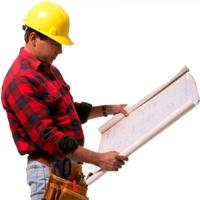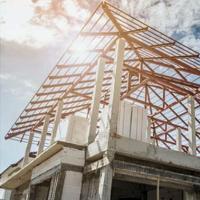Worry-Free Home Additions
by Guest Post on Feb 3, 2010
So you’ve had your architect-designed home addition approved for construction and are now ready to engage a builder to do the work. Putting on first floor home additions is for many people one of the largest single investments they will make, second only to the purchase of the house itself. Using the right builder can make the difference between a smooth worry-free experience, and 12 months or more of pure stress. In this article, Paul Petrusma shows how, by selecting the right builder, you can maximize the success of your home improvement project while avoiding unnecessary headaches.
1. Stay in Control of your Budget You will likely have been given a ballpark estimate of the building cost to use as the basis for your project budget.
While this is generally a good starting point, each home renovation project is unique and you do not want to be stung with additional costs which were not included in the price. In other words, the devil is in the detail. Obtain a Fixed-Price Quotation. The only way to stay in control of your budget is to insist on a detailed, fixed price Quotation from each Builder that you approach to do the work, a Quotation that specifies everything the Builder will take responsibility for. Read the Quotation document carefully. If it isn’t listed, then it’s not likely to be included. Who will pay for internal painting, inspection for hazardous materials (and removal if found), pest inspection, Council damage deposit, Construction Certificate, final inspection fees, etc? Insist that the builder be specific – for example, include window frame colors (non-standard colors are often dearer). Some builders charge a small fee to produce a detailed fixed price Quotation; this is likely to be money well spent given the peace of mind that comes from knowing that your budget cost will not blow out. Prime Cost allowances are typically included in a Quotation for items you will select yourself during construction, such as bathroom hardware. If you select an item more expensive than the allowance, you will be required to pay the balance. If, on the other hand, you select one that is cheaper than the allowance then you should receive a credit for the difference. For a meaningful price comparison between quotations, make sure you include the Prime Cost allowance. Provisional Sums are allowances the Builder has included for works that could not be costed at this time because the scope of the work may not be clear until demolition works are done. It is a “best guess” by the Builder and you will typically be required to pay any amount over the allowance stated (or receive a credit if the actual cost is less than the allowance). If Provisional Sums vary immensely between quotes, ask the Builder why this is the case.
2. Minimise the Problem of Construction Delays & Poor Quality Quality. First-floor home additions are a specialized type of construction, employing different techniques and systems than those used for the new home construction or ground floor extensions.
Don’t leave quality to chance. Here are some ideas: • Check your local Department of Fair Trading for the builder’s rating • Find a builder who has won awards for their home addition projects • Speak to past clients or review client testimonials • Ask the Builder what quality control systems they utilize. For example, do they verify the measurements on the plans you provide in order to minimize potential construction problems? Warranties. While warranties against deficient structural work are provided through NSW legislation, having “minor” defects repaired can be a more arduous process, particularly for problems discovered only after you take occupation of the new room(s). Make sure that your builder provides a minor defects warranty for at least 6 months after completion. Construction Time. The maximum time to build should be written into the building contract. As a guide, expect a $300,000 addition to taking up to 5 months to complete. If the contract duration is longer, you may be in for some unwelcome delays…
3. Address Construction Issues Before They Begin Construction Supervisor. You will likely be allocated a Construction Supervisor who will oversee the trade contractors working on your project.
The Supervisor’s role is to ensure that construction times and quality are achieved and that any concerns you may have during construction are heeded. Obtain a commitment that the Supervisor will attend your site on a daily basis during construction and will keep you fully informed on progress. Emergency Contact Numbers. Make sure that the Builder has a 24/7 contact number in case of emergency during construction, such as storm damage. You should also be given backup contact numbers in case you are unable to reach your Construction Supervisor. Protecting Your Belongings. Your roof area and parts of the ground floor will become a construction site. Most builders will not insure against damage to your home contents so it is advisable to remove fragile items such as chandeliers or antiques to avoid the risk of damage. You should also check with the builder as to the precautions to be taken to maintain property security.
Popular Articles
Three Places to Spend Money on the Exterior of Your Home
When you have the exterior of your home remodeled, you are investing, time, energy and convenience into the project and you want to make sure that...
105561 Views
Homemade Headboards-Make an Upholstered or Wooden Headboard
Homemade headboards can add a lot of personality to any bedroom. They can be coordinated with existing furniture and room decor or they can be the...
80435 Views
When to Use a Brush, Roller or Sponge Brush
Brushes are a good choice for painting trim and woodwork. They are also useful for cutting in the edges around the top and bottom edges and corners...
73053 Views
Creating a Cottage Kitchen with Bead Board
Kitchen decor can range from modern and bold to elegant and elaborate by using strategic kitchen pieces. One of the most popular decorating trends...
58844 Views
Gas Fireplace Diagnostics and Troubleshooting
Follow these steps for diagnosing and troubleshooting Gas Fireplaces repairs. For the average DIYer, this may seem intimidating, depending on the...
35833 Views
Latest Articles
Why Professional Heat Pump Installation is Key to Maximizing Efficiency and Longevity
Heat pumps are a highly efficient means of heating and cooling homes, reducing energy costs and contributing to environmental sustainability. To...
on Dec 15, 2025
Hydro Jetting Services: Unclog Your Pipes with the Power of Water
When faced with stubborn clogs and slow drains, conventional solutions often fall short. But with the innovation of hydro jetting services,...
on Dec 15, 2025
Why Professional Boiler Repair is Essential for Home Safety and Comfort
Maintaining a warm and safe home environment is paramount for any homeowner. Your home's boiler system plays a critical role in this, but what...
on Nov 5, 2025
How to Keep Your Home Warm in the Winter
How to Keep Your Home Warm in the WinterAs winter approaches, keeping your home warm becomes a priority for comfort and health. Efficient heating...
on Oct 29, 2025
Why Reliable Furnace Repair is Essential for Winter Comfort
As the cold season approaches, homeowners recognize the critical role that a well-functioning furnace plays in ensuring a warm and cozy living...
on Oct 29, 2025
Featured Articles
What Type of Licensed Contractor Should You Hire?
on Feb 28, 2017
Hire Contractors / Estimates

Looking for a specialty project? There are many types of contractors available for your home improvement needs. Finding the right type of...
Actions
Top Categories
- Garden / Landscaping / Patio — 264
- Kitchen / Bathrooms — 240
- Real Estate / Finance — 203
- Appliance / Repair — 186
- Interior Design / Decor — 184
- HVAC / Air Conditioning — 150
- Cleaning / Maintenance — 144
- Improvements / Remodeling — 131
- Plumbing / Basements — 120
- Floors / Tile / Hardwood — 116
- Safety / Security — 114
- Doors / Garages — 113
Articles Archive
More DIY Articles
How to Rent Your Property
With over 25% of properties on the market for over 6 months in some countries and nearly 10% on for almost a year, it is worth investing time in...
Six Tips That Will Make Your Guest Room Perfect
Being a house guest can be awkward. It is easy to feel uncomfortable if you have nowhere to retreat to. Thats why its really important to have a...
Putting Vinyl Siding on Gables
Re-siding your home may seem like a daunting task, but vinyl siding is easy to work with and install. This document covers general instructions for...
How to Repair the Seat in a Cane Chair
For the handy do-it-yourself homeowner, repairing the seat in a cane chair is a task that can be completed relatively easily with some basic...
Replacing Your Roof for the First Time – What You Need to Know
There are many repairs and renovations that homeowners encounter. Some are optional and based more on the look and functionality of your home,...

